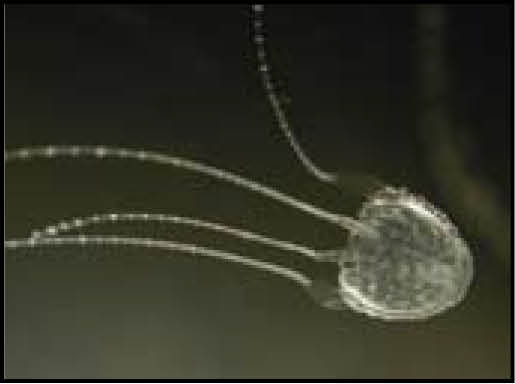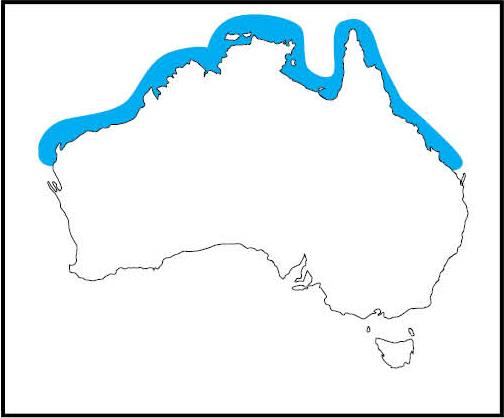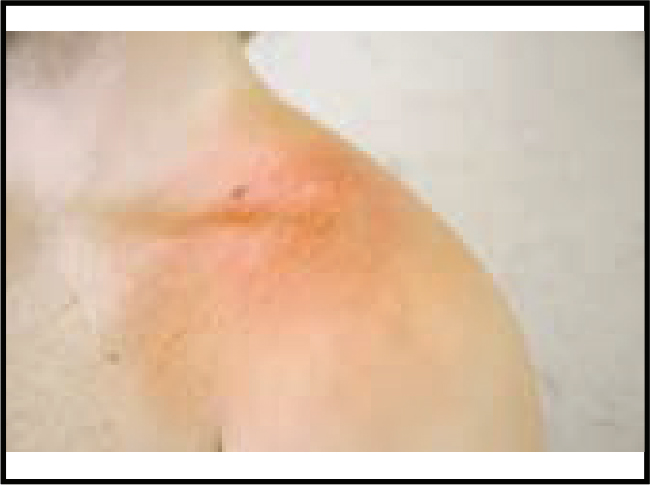Irukandji

Carukia barnesi
Irukandji

Carukia barnesi
Small transparent box jellyfish, 1-2cm in diameter, usually not seen. Some may be up to 10cm long.

Size relative to human
Tropical Australian waters north of southern Fraser Island (Queensland), Northern Territory waters and Western Australia south to Exmouth.

Distribution in Australian waters
Irukandji jellyfish cause an initial minor skin sting followed 5-40 minutes later by severe generalised muscular pain, headache, vomiting and sweating. The sting from some species can cause very high blood pressure or have effects on the heart which may be life threatening. These symptoms are sometimes referred to as Irukandji Syndrome.
Because the symptoms of Irukandji Syndrome may take time to appear, all tropical jellyfish stings should be doused with vinegar. The casualty should remain out of the water, in a safe location and monitored for 45 minutes.

Irukandji sting showing localised sweating
The Carukia barnesi is a type of box jellyfish and is the most common species associated with the Irukandji syndrome. Irukandji jellyfish also include Carukia shinju, Carybdea xaymacana, Malo maxima, Malo kingi, Alatina mordens, Gerongia rifkinae, and Morbakka fenneri. Irukandji stings are occasionally reported in subtropical and temperate regions of the world, including Moreton Bay and Fraser Island.
Irukandji jellyfish are a subset of the carybdeid jellyfish.